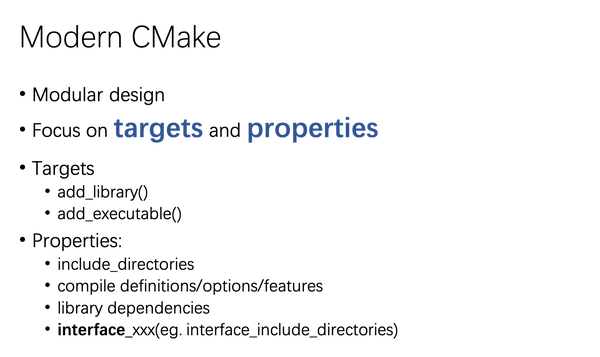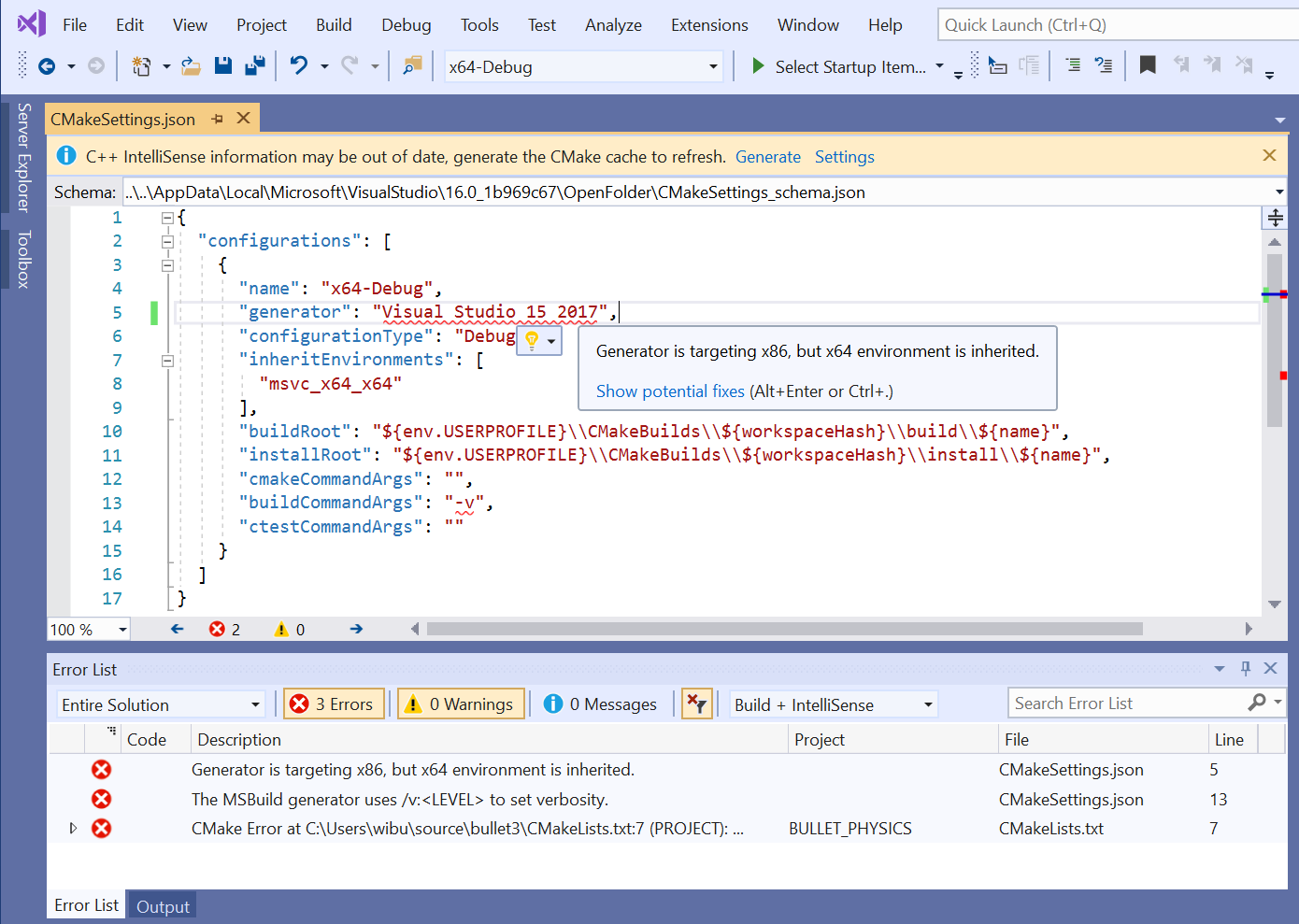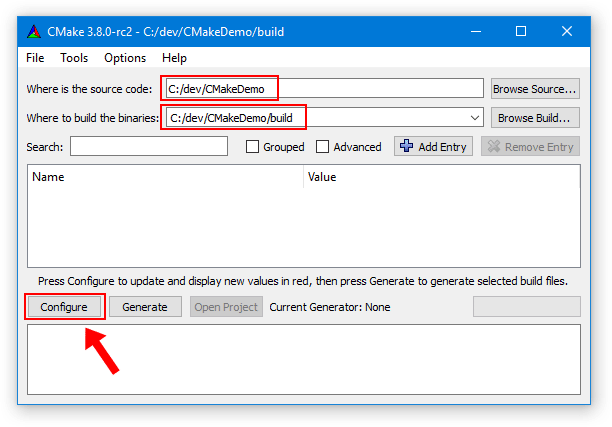

Use its -G option to specify the generator for a new build tree. The cmake(1) command-line tool -help output lists available generators on the current platform. Optionally one of the Extra Generators may be selected as a variant of some of the Command-Line Build Tool Generators to produce project files for an auxiliary IDE.ĬMake Generators are platform-specific so each may be available only on certain platforms. Exactly one of the CMake Generators must be selected for a build tree to determine what native build system is to be used.
#Cmake generator windows 10

#Cmake generator full
cmakeExecutable: Specifies the full path to the CMake program executable, including the file name and extension.Wildcards * and ? can be used for glob pattern matching. remoteCopySourcesExclusionList: An array that specifies a list of paths to be excluded when copying source files: a path can be the name of a file/directory, or a relative path from the root of the copy.rsyncCommandArgs: Specifies a set of command-line options passed to rsync.Should only be false if the compilers in use to not support gcc-style arguments.


remoteCopyUseCompilerDefaults: Specifies whether to use the compiler's default defines and include paths for IntelliSense.remoteCopyExcludeDirectories: Include directories NOT to copy from the remote machine.remoteCopyAdditionalIncludeDirectories: Additional include directories to be copied from the remote machine to support IntelliSense.remoteCopyBuildOutput: A boolean that specifies whether to copy the build outputs from the remote system.Set to false if you manage file synchronization yourself. remoteCopySources: A boolean that specifies whether Visual Studio should copy source files to the remote machine.Supported macros include $, where VARIABLE is an environment variable that's been defined at the system, user, or session level. If the folder doesn't exist, it's created. Maps to -DCMAKE_BINARY_DIR switch and specifies where CMakeCache.txt is created. For more information on Ninja commands, see Ninja command line arguments.īuildRoot: Specifies the directory in which CMake generates build scripts for the chosen generator. For example, passing -v when using the Ninja generator forces Ninja to output command lines. Format: flag1=value:flag2=value2.īuildCommandArgs: Specifies native build switches passed to CMake after -build. On Linux, compile with -fno-omit-frame-pointer and compiler optimization level -Os or -Oo for best results.ĪddressSanitizerRuntimeFlags: The runtime flags passed to AddressSanitizer in the ASAN_OPTIONS environment variable. You can add any number of pre-defined or custom configurations to the file.ĪddressSanitizerEnabled: If true, compiles the program using AddressSanitizer. For more information about the pre-defined configurations, see CMake predefined configuration reference. The configurations array contains all the configurations for a CMake project. For more information, see Customize CMake build settings in Visual Studio. You can switch between the configurations easily in the IDE to generate the various project files. You can add or remove configurations in the IDE and then edit them directly in the JSON file or use the CMake Settings editor (Visual Studio 2019 and later). The values can be overridden in the CMakeLists.txt files. CMake uses the command-line arguments to regenerate the root CMakeCache.txt file and other project files for the project. Each configuration specifies an environment, which encapsulates information about the compiler toolset, for example MSVC, GCC, or Clang. A configuration specifies properties that apply to a specific platform and build-type, for example, x86-Debug or Linux-Release. The CMakeSettings.json file contains information that Visual Studio uses for IntelliSense and to construct the command-line arguments that it passes to CMake for a specified configuration and compiler environment.


 0 kommentar(er)
0 kommentar(er)
